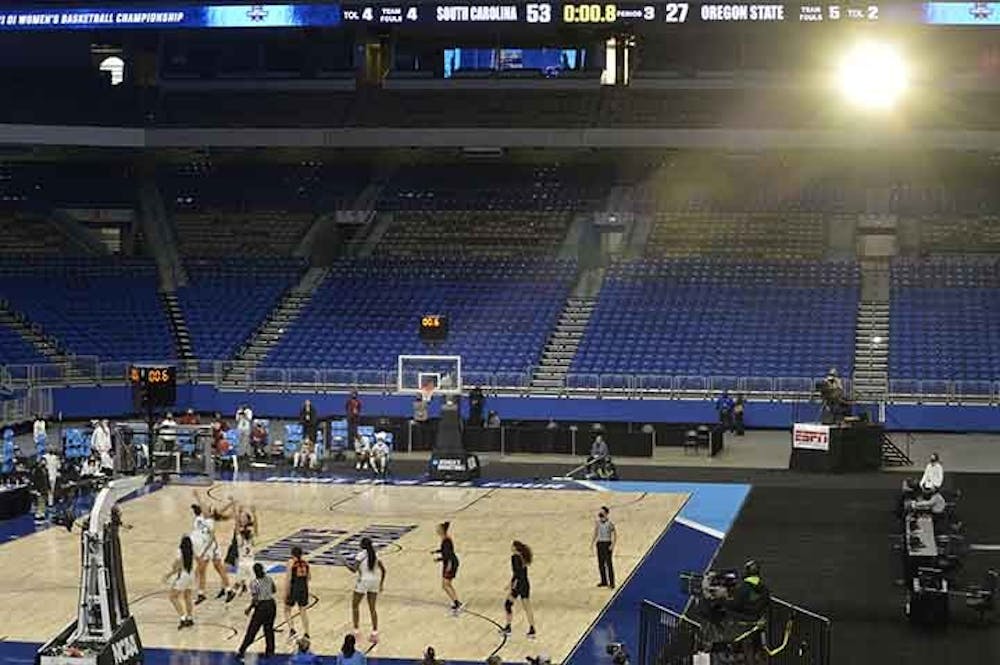March Madness is a popular collegiate sporting event that features both the NCAA men’s and women’s basketball tournaments. This year, disparities between the two tournaments' weight rooms have dominated headlines around the country.
These differences caused University of South Carolina women’s basketball coach Dawn Staley to speak out.
“In a season that has been focused on justice and equality it’s disheartening that we are addressing the glaring deficiencies and inequalities in the WOMEN’S and men’s NCAA Tournament experiences for the student-athletes, but here we are,” Staley said in a statement released on her Twitter account on March 19. “The tagline leaves no run for misinterpretation - "The Official NCAA destination for all things Division I/ NCAA Men’s Basketball." Those words mean one thing- March Madness is ONLY about men’s basketball.”
University of Oregon forward Sedona Prince posted proof of the disparity on her TikTok account, the most popular post being of Prince showing the obvious difference between the men and women’s weight rooms. On the video, it shows the NCAA provided its 64 women's teams with a dumbbell rack and a stack of yoga mats. Compared to the men’s state of the art equipment, it put the women’s weight room to shame.
The NCAA put out a statement after receiving heat from sports fans, coaches and players, blaming the discrepancy on “limited space." In the same video, Prince showed the large amount of space available for the NCAA to put just as much equipment as the men.
According to ESPN.com, the men’s basketball championship budget for the 2018-19 season was almost twice the budget of the women’s at $28 million. The women's championship lost $2.8 million, while the men's brought in $864.6 million.
Richard Southall, professor at the University of South Carolina and director at the College Sport Research Institute, said the difference between the two championships is “an indication of the relative ‘importance’ that the NCAA and the committees that operate the various tournaments, the importance that they place, or don’t place, on the two different tournaments and the level of professionalization and commercialization” used to promote both of these tournaments.
In a statement to The Daily Gamecock, athletic director Ray Tanner said the university is “very intentional in making our game playing experiences equitable with our men’s and women’s teams.” Tanner said he believes the NCAA aims to meet that goal, as well.
Lynn Holzman, vice president of NCAA women’s basketball, said in a press briefing on March 19 the NCAA “fell short” in preparing for the 64 teams invited to the women’s tournament in San Antonio and promised the NCAA would work to make improvements to the women’s facilities.
Senior vice president of NCAA basketball, Dan Gavitt, also apologized to both the student-athletes and the coaches for the weight room situation, echoing Holzmann’s promise to fix the issue as quickly as possible.
“The real issue is not the weights or the “swag” bags; it’s that they did not think or do not think that the women’s players “deserve” the same amenities of the men," Staley said in her statement.
On March 20, the NCAA debuted the new women’s tournament weight room on Twitter, with state of the art equipment that more accurately matches the men’s tournament weight room and provides adequate amenities for the remaining women’s basketball teams.
“I don't think that we've reached a tipping point yet to get some substantive changes made, but I think we're a little bit closer than we used to be,” Southall said.

